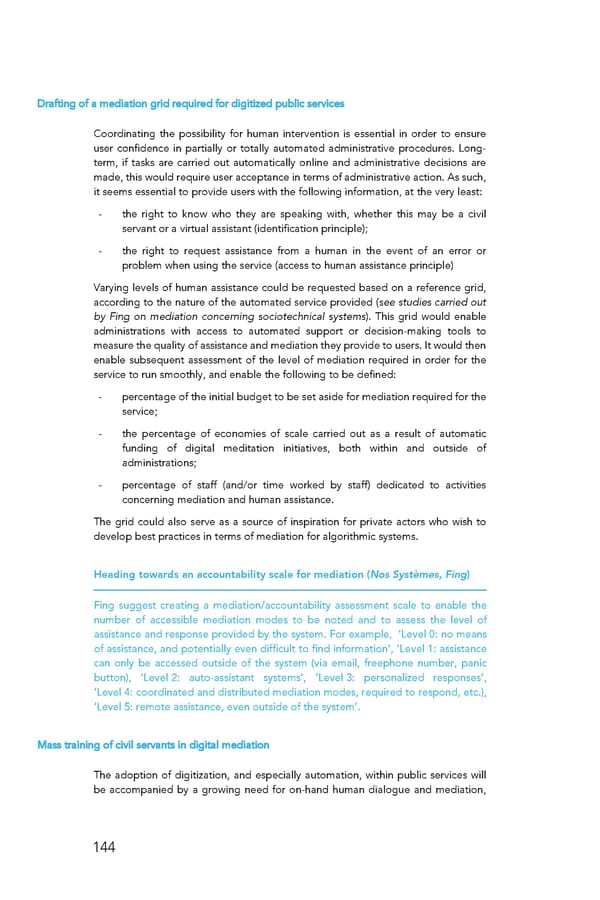Drafting of a mediation grid required for digitized public services Coordinating the possibility for human intervention is essential in order to ensure user confidence in partially or totally automated administrative procedures. Long- term, if tasks are carried out automatically online and administrative decisions are made, this would require user acceptance in terms of administrative action. As such, it seems essential to provide users with the following information, at the very least: - the right to know who they are speaking with, whether this may be a civil servant or a virtual assistant (identification principle); - the right to request assistance from a human in the event of an error or problem when using the service (access to human assistance principle) Varying levels of human assistance could be requested based on a reference grid, according to the nature of the automated service provided (see studies carried out by Fing on mediation concerning sociotechnical systems). This grid would enable administrations with access to automated support or decision-making tools to measure the quality of assistance and mediation they provide to users. It would then enable subsequent assessment of the level of mediation required in order for the service to run smoothly, and enable the following to be defined: - percentage of the initial budget to be set aside for mediation required for the service; - the percentage of economies of scale carried out as a result of automatic funding of digital meditation initiatives, both within and outside of administrations; - percentage of staff (and/or time worked by staff) dedicated to activities concerning mediation and human assistance. The grid could also serve as a source of inspiration for private actors who wish to develop best practices in terms of mediation for algorithmic systems. Heading towards an accountability scale for mediation (Nos Systèmes, Fing) Fing suggest creating a mediation/accountability assessment scale to enable the number of accessible mediation modes to be noted and to assess the level of assistance and response provided by the system. For example, ‘Level 0: no means of assistance, and potentially even difficult to find information’, ‘Level 1: assistance can only be accessed outside of the system (via email, freephone number, panic button), ‘Level 2: auto-assistant systems’, ‘Level 3: personalized responses’, ‘Level 4: coordinated and distributed mediation modes, required to respond, etc.), ‘Level 5: remote assistance, even outside of the system’. Mass training of civil servants in digital mediation The adoption of digitization, and especially automation, within public services will be accompanied by a growing need for on-hand human dialogue and mediation, 144
 For a Meaningful AI - Report Page 142 Page 144
For a Meaningful AI - Report Page 142 Page 144